What’s the Best Way to Prune your Lemon Tree?
Pruning Lemon Trees wasn’t as easy as I thought! Expert lemon pruning tips didn’t always work and there just wasn’t enough good information online.
That’s why I created the 10 Most EFFECTIVE Tips for Pruning Lemon Trees.
These 10 Tips ACTUALLY Work & are Easy to Follow for ALL skillset levels of lemon tree growers!
Read THIS Before Pruning Your Lemon Tree
Knowing what hardiness zone you live in is critical to understanding when you should prune your lemon tree.
- Related: Find your Hardiness Zone HERE
It can be the difference between having a lemon tree bear more fruit than you know what to do with or having your fruit tree die.

It should be noted that you should always prune your lemon tree in late winter/early spring after the ground has begun to thaw, but before your lemon tree has buds growing on it.
How to Prune Lemon Trees (#1-10 Tips)
#1. Prune and Trim your Lemon Tree Immediately!

The first time you prune your lemon tree is critical to the long-term success of shaping it and growing more lemons.
You should prune your lemon tree immediately after you plant it in the ground. When you do this, you will want to prune it about 50% back.
Focus on pruning the branches in a shape that you want the tree to grow into.
Pruning immediately helps reduce the risk of shock, stress, and damage.
Also, it promotes well-established roots and plant growth. Finally, it expediates fruit growth and fruit size.
#2. Prune the First Winter AFTER Planting
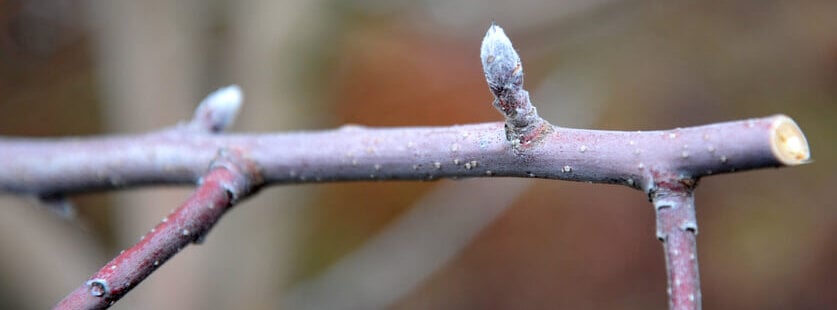
The first winter AFTER planting you will want to prune your lemon tree.
During this first winter, you will want to prune all but 4 to 6 branches.
These will be your fruiting branches. Fruiting wood is wood that will bear lemon fruit on them.
By pruning during this first winter you will be giving your tree the best chance to grow more and better fruit.
#3. Prune Every Year
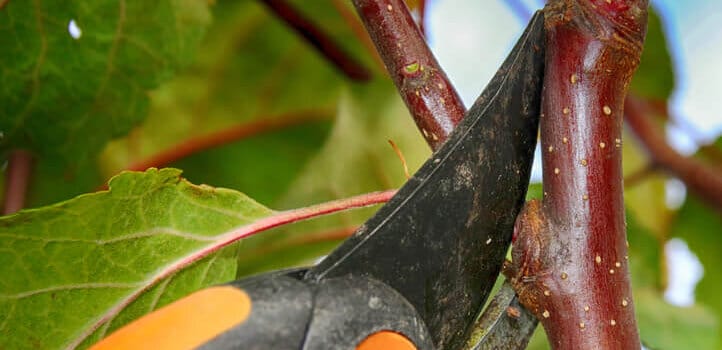
Do you want to know how to keep your Lemon Tree healthy and fruit-bearing for years to come?
It’s simple! Prune Every Year during the dormant season. Do not skip a year and be consistent with how you prune!
You will follow the same instructions to pruning as you read in tip #2, but keep 6-8 branches and prune everything else down to ground level.
#4. Prune the Correct Branches
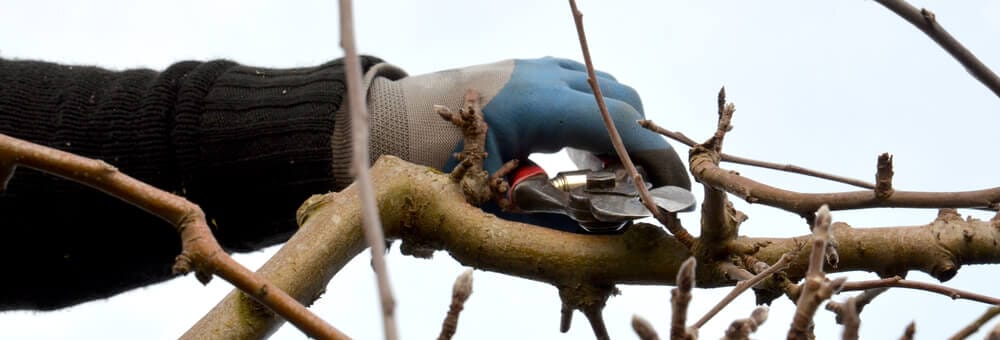
When pruning every year there are certain tips you want to ensure you follow consistently.
One of the most important tips is to make sure you prune any branches that are coming off of your Fruiting Wood that does not point outwards.
If it points inwards, cut it. If it points out horizontally, cut it.
#5. Prune Dead Wood
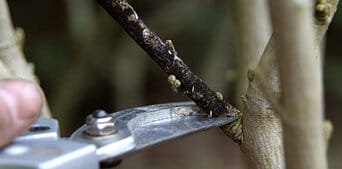
In addition to pruning wood that points inwards, you also want to prune deadwood.
If the wood has no bark on it then prune it.
If the wood looks diseased or discolored then prune it.
And
#6. Prune Suckers
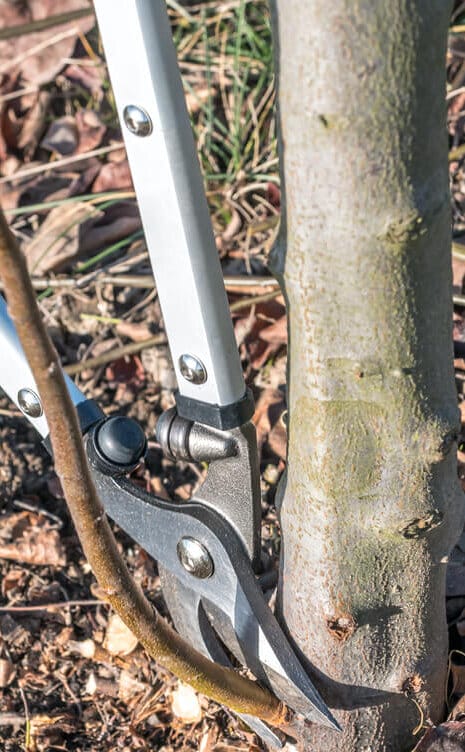
Not only should you prune pointing inwards, dead, and diseased branches, but you also need to prune suckers.
Suckers are wood that sprouts from the base of the lemon tree.
Suckers provide no benefit to your plant. They take valuable nutrients and water from your plant. In addition, they do not bear fruit.
#7. Prune Secondary Branches
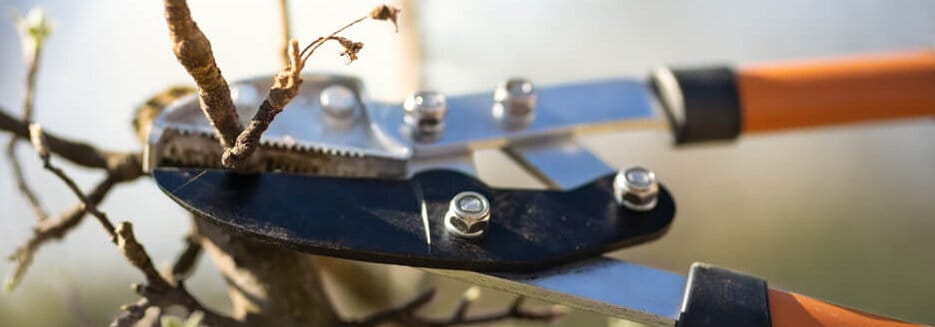
You will want to prune any secondary branch that is growing at less than a 45-degree angle. A secondary branch is a
The reason for pruning these types of branches is because they overcrowd
When overcrowding occurs the
#8. Prune Fruiting Wood

Not only will you want to prune non-fruiting wood, but you will want to prune your 6 to 8 fruiting wood.
To help promote growth, additional fruit growth, and efficiency prune your main branches 1/3 to 1/4 their original size.
#9. Prune Non-Fruiting Wood

If after pruning you still have more than 6 to 8 fruiting wood on your plant then Tip #9 is ESSENTIAL!.
Prune the rest of your non-fruiting wood down to ground level.
The less non-fruiting wood you have the better. Non-fruiting wood again takes water and nutrients from
#10. Don’t Forget About Distance
As we already talked about it is important to not overcrowd your fruit-bearing branches.
Make sure to keep branches 12 to 15 inches apart.
Make sure these branches are not pointing inwards.
And make sure to prune any branches that intertwine others. Even if they are fruit-bearing.
If all else fails then I highly recommend watching this video on how to prune lemon trees:
Other Lemon Tree Caring Tips

Pruning is critical for plant growth and growing fruit.
With that being said you can also promote healthy tree growth and more fruit by taking advantage of a couple of simple lemon tree care tips.
If you follow these tips, along with pruning you will have years of productive lemon production.
A) Reasons Why Lemons Won’t Ripen
If lemons on your tree won’t ripen or fall off before ripening there can be several reasons for it.
One of the reasons is that your tree is not getting enough water.
If this is the case make sure to water yourlemon tree more. Make sure to deeply water your lemon tree 3 times a week. I would recommend 30 seconds to 1 minute each time.
B) Lemon Tree Pests
One of the main ways to care for your lemon tree is to prevent pests.
One of the easiest ways to deter pests is to fence around it.
By fencing, you will prevent a lemon tree’s biggest pest threat, the deer.
- Related: How to Keep Deer Out of Your Garden
A simple fence that covers the trunk of your tree is all you need!
C) Lemon Tree Insects
In addition, you will want to spray your tree with a pesticide to prevent disease and pests.
By spraying you will prevent aphids, mites, flies, fruit beetles, and ants.
These five insects are attracted to not only the tree but the aroma of the fruit. Therefore, they can quickly destroy your plant within a couple of days.
D) Lemon Tree Diseases
In addition, spraying will prevent diseases such as mosaic, souring, and canker.
Not only this, but I recommend cleaning your pruners or loppers before every use. One of the most common ways that disease is spread among fruit trees is through dirty pruners.
Learn how to properly clean your pruners in the video below:
E) Mulch
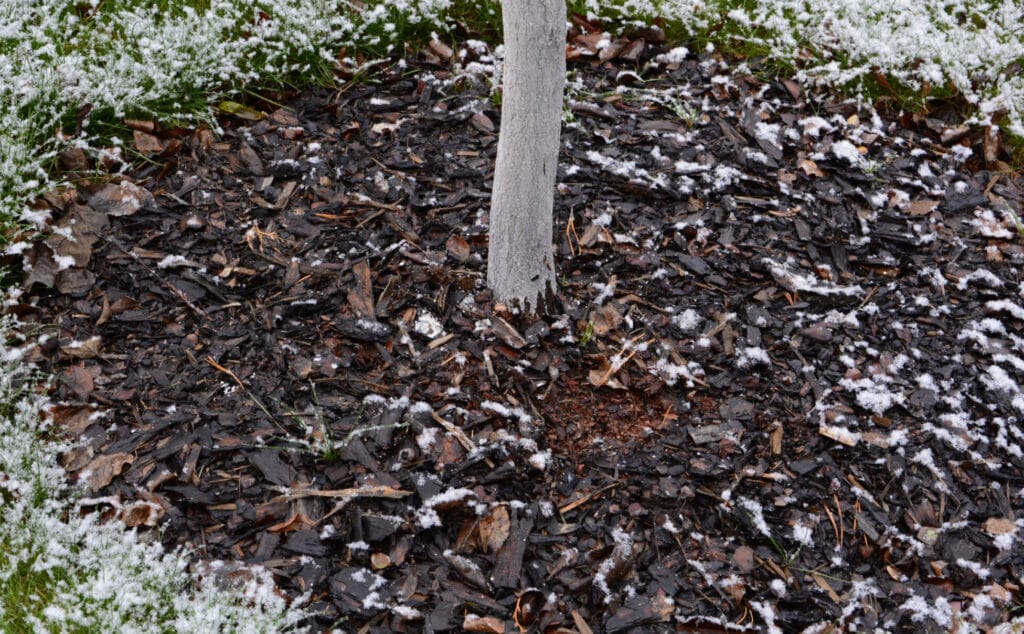
If you want to effectively care for your lemon tree then mulch around its base.
Mulching around your tree does two things.
- First, it helps your tree absorb and hold water better than without it.
- Second, it prevents weeds. The more weeds you have the less water and nutrients can be absorbed by your plant.
F) Fertilize
Another great way to care for your lemon tree is to fertilize it.
Fertilizing is pretty simple. Follow the instructions provided with the
Do this in either late winter or early spring annually. Make sure not to add too much nitrogen.
G) Winter Care
Most lemon trees can survive temperatures above 50 degrees Fahrenheit. Any consistently lower temperatures and even the hardiest of lemon trees will die.
If you live in a hardiness zone that gets extremely cold temperatures consistently in winter then plant a type of lemon that can grow in gardening containers. When the weather gets too cold bring it inside. You can also bring it in every fall and let it go dormant.
If you live in a region that has a cold to mild temperatures in the winter then plant your lemon outside.
If you feel your weather may get colder than usual there are ways to protect it. Therefore, insulate it with leaves, mulch, or a tarp to prevent cold-weather damage.
Below, is a great video on How to Grow Lemons in Containers:
Supplies Needed for Pruning
1. Gloves
While gloves aren’t essential for learning how to prune and trim lemons trees they do serve a valuable purpose.
They prevent your hands from getting scraped by branches, bit by insects, and even potential sap rashes.
I recommend an all-purpose glove. The Pine Tree Tools WorkingGloves is perfect for pruning and many other types of gardening.
2. Pruners
The whole purpose of this article is to teach you How to Prune Lemon Trees. You can’t prune lemon trees with pruners.
While there are numerous pruners out there do yourself and your plant a favor and get the best.
This will help to learn How to Prune Lemon Trees that much easier.
The Fiskars Steel Bypass Pruners are ideal for cutting stems and light branches.
The no-stick coating makes it the best pruners out there for cutting through wood without having to worry about sap.
- Related: 12 Best Pruning Shears
3. Loppers
As your Lemon trees continue to grow pruners won’t get the job done. The bigger the tree and bush are the more you will need a lopper.
Loppers are perfect for large branches! And they are easy to use when learning how to prune lemon trees.
The Fiskars Lopper is ideal for cutting growth and large branches. Made with a fully hardened blade that is perfect for heavy use.
In addition, the rust-resistant blade will last you for years.
Conclusion
While pruning is not rocket science there are ESSENTIAL Tips that can make it as effective and efficient as possible.
Make sure you have the proper supplies before you begin.
This will save you time, energy, money, and frustration. It will also make your job as easy as possible.
In addition, follow the 10 ESSENTIAL Tips and Caring Tips above. If you do this you will not fail.
Also, see a few key reminders below:
- Immediately prune your lemon tree.
- ALWAYS Prune your lemon tree after the first winter.
- Prune every year. This ensures that your tree grows as efficiently as possible.
- Trim the correct branches to ensure healthy growth and more fruit.
- Prune all dead wood. This will help reduce disease and allow nutrients only to go to fruiting wood, flowers, and fruit.
- Get rid of suckers. These are growth that comes from the ground and bears no fruit.
- Prune all secondary branches. Again, this type of wood will only take nutrients and provide no fruit.
- Trim down fruiting wood. This will allow the fruit to grow more efficiently and effectively.
- Prune down all other non-fruiting wood. If it points inwards then prune it. If it intertwines with another wood prune it. And if it is a sucker then prune it.
- Don’t forget distance of branches is important for lemon tree care!
If you enjoyed this article then I recommend reading:
10 MOST Effective Tips for Pruning Fig Trees